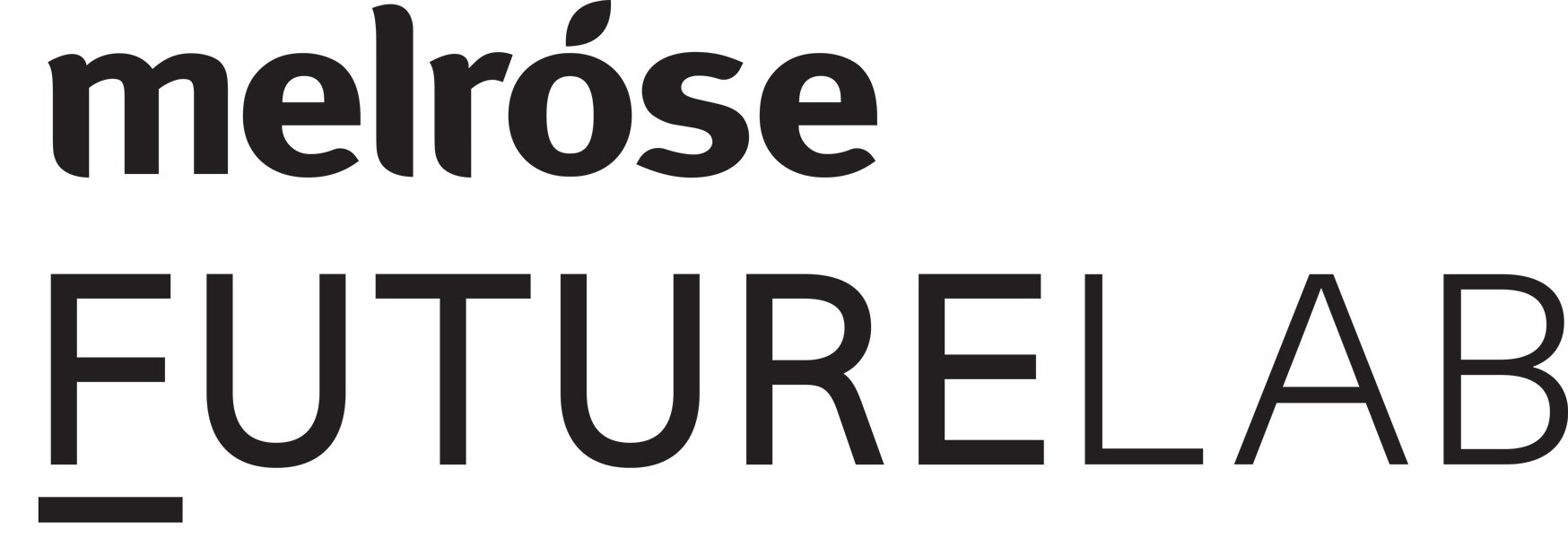Most people have a reasonable understanding of menopause – the natural biological process marking the end of a woman’s reproductive years. However, when it comes to perimenopause, the transitional period leading up to menopause, awareness is generally quite low.
This is hardly surprising given that, not so long ago, perimenopause was largely ignored and not acknowledged as a distinct phase in a woman’s reproductive life. Women in their late 30s and 40s who experienced symptoms such as mood swings, anxiety or brain fog were often dismissed or misdiagnosed. They were commonly told that their symptoms were just a part of ageing and were frequently prescribed antidepressants or tranquilisers rather than addressing hormonal imbalances.
By the 1990s there began growing scientific and medical recognition of perimenopause as a distinct stage of hormonal transition. Since that time there has been an increased awareness and advocacy which has driven more scientific studies on the wide range of perimenopausal symptoms.
What is Perimenopause?
Perimenopause is the natural progression from a woman’s reproductive years to the end of fertility, marked by hormonal shifts, changes in menstrual cycles, and symptoms which may include hot flushes, mood fluctuations, and sleep disturbances. This stage commonly begins in a woman’s early 40s but can start as early as mid-30s. On average, it can last for 4 – 8 years but may also be experienced for only a few months or up to ten years.
During perimenopause, the main female sex hormones, oestrogen and progesterone, begin to decline. However, this fall typically occurs unevenly resulting in cycles that lengthen or shorten and menstrual periods that may be heavier one month and lighter the next. Menopause-like symptoms may also be experienced during this time including hot flushes, sleep disturbances, metabolic changes, vaginal dryness and mood swings.
Common Symptoms of Perimenopause
|
Symptom |
Description |
|
|
Irregular Periods |
Cycles may become shorter, longer, heavier, or lighter due to hormonal fluctuations. |
|
|
Hot Flushes & Night Sweats |
Sudden waves of heat, flushing, and sweating, often disrupting sleep. |
|
|
Mood Swings & Irritability |
Increased emotional sensitivity, anxiety, or episodes of depression. |
|
|
Sleep Disturbances |
Difficulty falling or staying asleep, often linked to declining progesterone levels. |
|
|
Brain Fog & Memory Issues |
Difficulty concentrating, forgetfulness, and mental fatigue. |
|
|
Joint & Muscle Pain |
|
|
|
Vaginal Dryness & Discomfort |
Reduced oestrogen levels can lead to dryness, irritation, and discomfort during intercourse. |
|
|
Decreased Libido |
Lower sex drive due to hormonal changes and other symptoms. |
|
|
Skin Changes |
Increased dryness, fine lines, or breakouts due to hormonal shifts. |
Due to the uneven decline of hormones, a relative imbalance between oestrogen and progesterone can occur. This commonly results in higher oestrogen levels compared to progesterone, even if both are dropping. This state is known as oestrogen dominance and can come with its own set of symptoms including heavy periods, breast tenderness, headaches and weight gain.

Symptoms of Oestrogen Dominance During Perimenopause
|
Symptom |
Description |
|
Mood Swings & Irritability |
Increased emotional sensitivity, anxiety, or episodes of depression. |
|
Fatigue |
Persistent low energy levels, even after rest.
|
|
Weight Gain & Changes in Metabolism |
Increased fat accumulation, particularly around the abdomen. |
|
Breast Tenderness |
Soreness or sensitivity, especially before menstruation. |
|
Heavy Periods |
Without progesterone, oestrogen leads to heavier, prolonged periods. |
|
Headaches |
Higher relative oestrogen can trigger headaches by affecting blood vessel dilation. |
Strategies to Relieve Symptoms of Perimenopause
Perimenopause is a natural stage in every woman’s life. Even though the list of symptoms associated with this transition may seem confronting, there is much that can be done to minimise and manage these without the need for medication.
Diet and Nutrition
While hormonal change during perimenopause is natural, our modern dietary patterns and nutritional deficiencies have resulted in worsening symptoms, especially when compared to previous generations.
Over the last fifty years our increasing consumption of highly processed foods rich in refined sugars, unhealthy fats and synthetic additives has resulted in disruptions to blood sugar and insulin levels, increased inflammation and oxidative stress, and altered gut health. All of this interferes with hormone metabolism amplifying perimenopause symptoms.
Therefore, it’s important to reduce or avoid processed foods, sugars and alcohol. These cause frequent spikes in insulin, cortisol and inflammation resulting in more intense hot flushes, mood swings and weight gain.
Instead, prioritise whole, unprocessed foods, such as lean proteins, healthy fats and fibre-rich veggies.
You may also need to address common deficiencies which are crucial for hormonal health. Consider supplementing with magnesium, omega -3 fatty acids, vitamins D3 and K2 and, if required, iron and vitamin B12.
|
Nutritional Factor |
Effects on Perimenopause |
Fix |
|
Increased Processed & Ultra-Processed Foods |
Spikes blood sugar & insulin, increases inflammation, disrupts gut health |
Prioritise whole, unprocessed foods (lean proteins, healthy fats, fibre-rich veggies) |
|
Low Protein Intake |
Leads to muscle loss, poor blood sugar control, weaker bones |
Aim for 1.6-2.2g protein per kg of body weight (e.g., 120-150g daily) |
|
Magnesium Deficiency |
Worsens insomnia, anxiety, migraines, blood sugar imbalances |
Take magnesium glycinate (for relaxation) or magnesium citrate (for digestion) |
|
Omega-3 Deficiency |
Increases inflammation, mood instability, estrogen metabolism issues |
Eat fatty fish (salmon, sardines) 2-3x per week or take omega-3 (EPA/DHA: 1000-2000 mg) |
|
Low Vitamin D & K2 |
Weakens bones, disrupts progesterone & estrogen balance, increases fatigue |
Take D3 + K2 together (5000 IU of D3 + K2-7 for calcium regulation) |
|
Iron & B12 Deficiency |
Causes fatigue, brain fog, worsens heavy periods & hair thinning |
Check ferritin levels, eat iron-rich foods (red meat, eggs, spinach, lentils) |
|
Excess Sugar & Blood Sugar Imbalances |
Exacerbates hot flashes, mood swings, insulin resistance, weight gain |
Reduce processed sugars, eat balanced meals with protein & fibre, consider intermittent fasting |
|
Alcohol & Caffeine Sensitivity |
Disrupts sleep, worsens hot flashes, mood swings, impairs liver detox |
Reduce alcohol (especially wine), limit caffeine in the afternoon |
|
Gut Health Disruptions |
Affects oestrogen metabolism, increases bloating, inflammation, autoimmunity |
Eat fermented foods (kimchi, sauerkraut, kefir), take a probiotic if needed |

Exercise
The hormonal changes experienced during perimenopause can result in an increased risk of cardiovascular disease, osteoporosis, metabolic & weight changes and muscle loss.
Appropriate exercise has not only been shown to reduce these risks but goes a long way to ensuring you remain in optimal health for the rest of your life.
Strength Training
Weight-bearing exercises or strength training is critical for maintaining muscle and bone mass and reduces your risk of osteoporosis and sarcopenia (age-related muscle loss). Maintaining muscle mass also improves metabolism and supports a healthy weight because muscles are highly metabolically active and improve insulin sensitivity.
A strength-training program that focuses on compound exercises (squats, lunges, deadlifts, push ups, rows) two to four times per week is a highly effective way of maintaining and building muscle during perimenopause.
It is also vital to get enough protein from this time on. During perimenopause the decline in oestrogen causes an acceleration of muscle loss increasing the need for quality protein. This requirement further grows when you include strength and resistance training. For optimal muscle maintenance aim for 1.2 – 1.8 g of protein per kg of body weight.
Cardiovascular Exercise
We all know that cardiovascular exercise is beneficial for heart and metabolic wellbeing, but a regular aerobic routine can also play a central role in managing the symptoms and hormonal changes associated with perimenopause.
Choose low impact activities that put less strain on your joints, which is more of a concern during perimenopause when joint pain can become a concern.
Activities such as brisk walking, swimming and cycling have been shown to reduce the severity of hot flashes and night sweats, improve sleep and mental health, and help maintain a healthy weight.
|
Exercise |
Benefits for Perimenopause |
Proven Benefits for Hormone Health & Metabolism |
|
Walking |
Improves cardiovascular health, reduces stress, helps maintain a healthy weight. |
Supports insulin sensitivity, helps regulate cortisol, and reduces belly fat accumulation. |
|
Swimming |
Low-impact full-body workout, improves cardiovascular health, supports joint health. |
Regulates stress hormones, enhances circulation, and supports fat metabolism. |
|
Cycling |
Boosts cardiovascular fitness, strengthens lower body muscles, supports joint health. |
Boosts mitochondrial function, improves insulin sensitivity, and enhances energy metabolism. |
|
Water Aerobics |
Gentle on joints, improves circulation, provides a full-body workout. |
Enhances circulation, reduces inflammation, and improves metabolic efficiency. |
|
Elliptical Training |
Cardio workout with minimal joint stress, enhances endurance and metabolism. |
Increases fat oxidation, supports cardiovascular health, and improves insulin response. |
Herbs and Phytoestrogens
As perimenopause marks the natural decline in fertility the need for higher levels of oestrogen and progesterone diminishes. However, that does not mean the body no longer requires these hormones. To compensate for this reduction in hormone production, humans evolved to continue getting oestrogen-like compounds from external sources, namely plants.
These plant oestrogens are known as phytoestrogens and are found in certain fruits, vegetables, legumes, seeds and medicinal herbs. They are weak oestrogen-like compounds that can exert just enough of an effect to manage or prevent perimenopausal symptoms.
|
Phytoestrogen Source |
Benefits for Perimenopause |
|
Flaxseeds |
Rich in lignans, may reduce hot flashes, support hormonal balance, and improve heart health. |
|
Soybeans & Soy Products (Tofu, Tempeh, Edamame, Soy Milk) |
High in isoflavones, can mimic estrogen, reduce menopausal symptoms, support bone density, and lower cholesterol. |
|
Sesame Seeds |
Contains lignans, helps with hormone metabolism, and provides calcium for bone health. |
|
Dried Fruits (Apricots, Prunes, Dates, Raisins) |
Lignans and isoflavones support hormonal balance, provide antioxidants, and aid digestion. |
|
Cruciferous Vegetables (Broccoli, Cauliflower, Brussels Sprouts, Cabbage) |
Lignans and indole-3-carbinol support estrogen metabolism and hormone detoxification. |
|
Berries (Strawberries, Raspberries, Cranberries, Blueberries) |
Provides lignans and flavonoids, supporting mild estrogenic effects and offering antioxidant benefits. |
|
Garlic |
Contains phytoestrogens that support bone health, reduce inflammation, and improve cardiovascular function. |
|
Peaches |
Rich in lignans and vitamins that help regulate hormones and support skin hydration. |
|
Whole Grains (Oats, Barley, Rye, Brown Rice, Wheat Bran) |
Provides lignans for hormone balance and essential fiber for metabolic health. |
|
Legumes (Lentils, Chickpeas, Beans) |
Rich in isoflavones and fiber, supports hormonal balance, digestion, and blood sugar regulation. |

Medicinal Herbs
Herbal medicines rich in phytoestrogens are generally stronger in effect than phytoestrogen-rich foods due to their higher concentration of active compounds and standardised extracts.
As a result, they can be used to great effect in managing a wide variety of perimenopausal symptoms. Herbs such as Siberian rhubarb and Shatavari are impressive phytoestrogenic herbs with a variety of therapeutic properties that have been shown to successfully address many perimenopausal symptoms. Similarly, herbs such as Vitex agnus-castus and Saffron, while not necessarily rich in phytoestrogens, have been used as effective solutions for natural perimenopausal symptom management.
|
Herb |
Contains Phytoestrogens? |
Key Active Compounds |
Perimenopause Benefits |
|
Siberian Rhubarb (Rheum rhaponticum) |
Yes |
Rhaponticin, desoxyrhaponticin (stilbenes) |
Reduces hot flashes, night sweats, mood swings, and vaginal dryness. |
|
Vitex agnus-castus (Chaste Tree) |
No |
Diterpenes, flavonoids, iridoids |
Balances hormones by reducing prolactin and supporting progesterone levels; helps with PMS, cycle irregularities, and mood stabilisation. |
|
Shatavari (Asparagus racemosus) |
Yes |
Saponins (shatavarins) |
Supports reproductive health, alleviates hot flashes and vaginal dryness, helps with stress-related hormonal imbalances. |
|
Saffron (Crocus sativus) |
No |
Crocin, crocetin, safranal |
Improves mood, reduces anxiety and depression, enhances emotional well-being during perimenopause. |
Conclusion
Perimenopause is a significant transitional phase in a woman’s life, often accompanied by a wide range of physical, emotional, and metabolic changes. While this stage can present challenges, increasing awareness and understanding have empowered women to take control of their health and well-being.
By adopting a nutrient-rich diet, engaging in regular strength and cardiovascular exercise, and incorporating natural phytoestrogens and medicinal herbs, women can effectively manage perimenopausal symptoms, often without the need for medication.
With the right lifestyle adjustments and supportive interventions, perimenopause can be navigated with greater ease, setting the stage for a healthier, more vibrant postmenopausal life.




Leave a comment
This site is protected by hCaptcha and the hCaptcha Privacy Policy and Terms of Service apply.